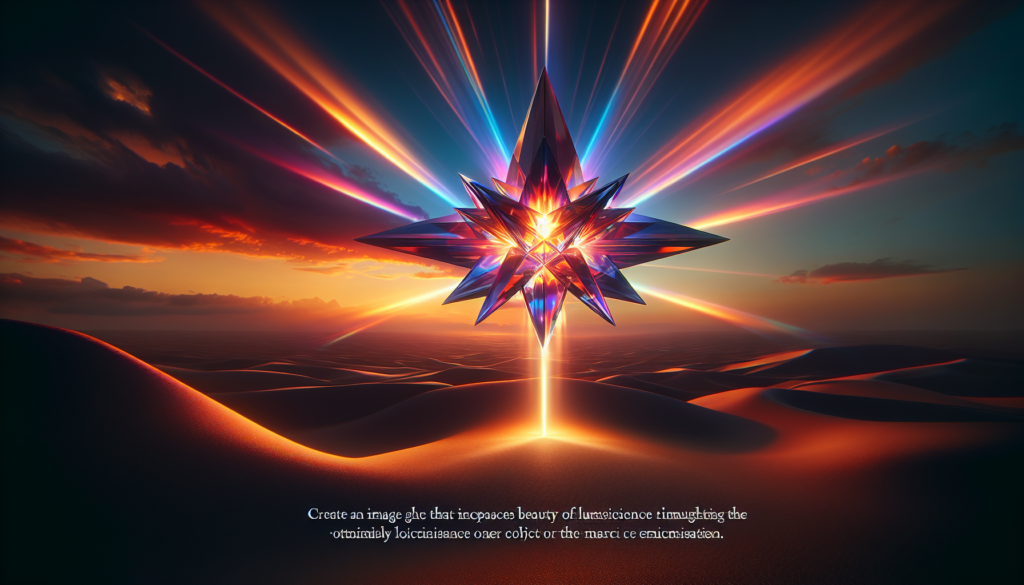In the world of photography, understanding and controlling lighting is the key to capturing breathtaking images that truly come alive. Whether you’re a novice with a camera or a seasoned professional, knowing how to manipulate different lighting techniques can transform an ordinary photograph into a masterpiece. In this article, you will explore the art of mastering lighting in photography, uncovering invaluable tips and tricks to enhance your skills behind the lens. Get ready to unlock the secrets of illuminating your subjects like a true master of light.
Understanding the Basics of Lighting in Photography
Photography is all about capturing light, and understanding the basics of lighting is crucial to create stunning photographs. Light affects the mood, tone, and overall quality of your images. By manipulating and controlling light, you can enhance the subject, create depth and dimension, and convey the desired emotion in your photographs. In this article, we will explore the importance of lighting in photography, different types of lighting, and how to master the art of lighting to capture breathtaking images.
The Importance of Lighting
Lighting plays a pivotal role in photography as it can completely transform the final outcome of your images. It sets the mood and conveys the intended message of your photograph. Whether you are shooting portraits, landscapes, or still life, the right lighting can make your subject appear vibrant, detailed, and visually appealing. On the other hand, poor lighting can lead to dull, uninspiring photographs.

Types of Lighting in Photography
There are two main types of lighting in photography: natural lighting and artificial lighting. Natural lighting refers to the light that comes from the sun, while artificial lighting consists of any light sources created by humans. Both types have their own pros and cons, and knowing when and how to use them can greatly enhance your photography skills.
Natural Lighting vs. Artificial Lighting
Natural lighting is often preferred by photographers as it provides a soft, warm glow and creates a natural feel in the photographs. The golden hour, which occurs shortly after sunrise or before sunset, is particularly favored by photographers due to the soft and warm lighting it offers. Shooting indoors with natural light can also produce stunning results if you position your subject near a window or use a reflector to bounce the light.
Artificial lighting, on the other hand, offers more control over the intensity, direction, and color of the light. Different types of artificial lighting, such as flash and continuous lighting, can be used to create various dramatic effects and eliminate the limitations of natural lighting. Mastering artificial lighting techniques can take your photography skills to the next level and allow you to capture images in any lighting condition.

Using Natural Lighting
Natural lighting is often admired for its soft and flattering effect on subjects. One of the most sought-after times for natural lighting is during the golden hour, which occurs shortly after sunrise or before sunset. During this time, the sun is low on the horizon, creating a warm, golden glow that adds a magical touch to your photographs. To make the most of the golden hour, position your subject facing the light source and experiment with different angles and compositions.
When shooting indoors with natural light, it’s important to use the available light to your advantage. Position your subject near a window to allow the soft, diffused light to fall on them. This will create a natural and pleasing illumination. If the light is too harsh, you can use sheer curtains or blinds to partially diffuse the light and create a softer effect.
Reflectors are another valuable tool when working with natural light. They are used to bounce light back onto your subject, filling in shadows and adding a beautiful catchlight to the eyes. Reflectors come in various colors, such as silver, gold, and white, each offering a different effect. Experiment with different reflectors to achieve the desired lighting for your photographs.
Mastering Artificial Lighting
Artificial lighting offers photographers more control over the lighting conditions and allows for creative manipulation of light. Understanding the different types of artificial lighting is the first step to mastering this technique.
Common types of artificial lighting include strobe lights, continuous lights, and LED lights. Strobe lights, also known as flashes or speedlights, are used to produce a burst of light for a brief moment. They are popular among portrait photographers as they freeze motion and provide a powerful burst of light that can be adjusted and controlled.
Continuous lights, as the name suggests, provide a constant source of light. They are commonly used in video production but can also be used in photography to create a consistent and even illumination. Continuous lights are great for beginners as they allow you to see the immediate effect of the light on the subject.
LED lights have gained popularity in recent years due to their versatility, portability, and energy efficiency. They come in various shapes and sizes and can be adjusted to different color temperatures. LED lights are ideal for both photography and videography and offer a wide range of creative possibilities.

Choosing the Right Light Source
Choosing the right light source depends on the desired effect you want to achieve. If you are photographing a still life or product, you may opt for a continuous light source to have a steady and constant illumination. For portrait photography, strobe lights can provide a powerful burst of light to freeze the moment and create a stunning visual impact.
Consider the color temperature of the light source as well. Different light sources emit different color temperatures, ranging from warm yellow to cool blue. Understanding color temperature and matching it with the desired mood of your photograph is crucial in creating visually appealing images.
Using Flash and Continuous Lighting
Flash photography is one of the most popular techniques in artificial lighting. It allows photographers to freeze motion, evenly illuminate the subject, and create dramatic effects by controlling the direction and intensity of the light. When using flash, it is important to consider the distance between the subject and the flash as it affects the exposure and lighting.
Continuous lighting, as mentioned earlier, provides a steady source of light that allows you to see the immediate effect on the subject. It is particularly useful when you need to shoot in low-light conditions or want to create a specific atmosphere. Continuous lights can be adjusted to different intensities and color temperatures, giving you full control over the lighting setup.

Understanding Light Quality
Light quality refers to how the light interacts with the subject and the resulting shadows and highlights. It plays a crucial role in creating the desired atmosphere and mood in your photographs. There are two main types of light quality: soft light and hard light.
Soft light is characterized by smooth, diffused shadows and soft transitions between light and dark areas. It is often considered more flattering for portraits as it minimizes imperfections and creates a more pleasant and gentle appearance.
Hard light, on the other hand, creates sharp, distinct shadows with a strong contrast between light and dark areas. It can produce a more dramatic effect and add a sense of depth and texture to your photographs. Hard light is commonly used in fashion photography and architectural photography to highlight intricate details.
Diffusing Light for a Softer Effect
To achieve a softer light, you can use various techniques to diffuse the light source. One of the simplest ways is to use a diffuser, which is a translucent material that softens and spreads the light, creating a gentle and even illumination. Diffusers can be attached to a flash or continuous light source to soften the light and reduce harsh shadows.
Another technique is to bounce the light off a reflective surface, such as a wall or ceiling, to create a larger and more diffused light source. This technique is particularly useful when working indoors with artificial lighting. By bouncing the light, you can create a softer and more pleasing illumination that wraps around the subject.

Creating Shadows and Highlights
Controlling shadows and highlights is essential in photography as it adds depth, dimension, and visual interest to your images. Shadows create contrast and shape, while highlights emphasize texture and details. By manipulating light direction, intensity, and modifiers, you can shape the shadows and highlights to create the desired effect.
Direct light, as the name suggests, is when the light source is positioned directly on the subject. This creates strong, defined shadows and distinct highlights. Indirect light, on the other hand, refers to the light source being diffused or bounced off a surface before reaching the subject. This produces softer shadows and more subtle highlights.
Using light modifiers, such as umbrellas, softboxes, or grids, can further control the direction and shape of the light, resulting in different shadow and highlight patterns. Experimenting with different modifiers and their positioning can add depth, texture, and drama to your photographs.
Working with Color Temperature
Color temperature refers to the color of light emitted by a light source, measured in Kelvin (K). Understanding color temperature is essential in achieving accurate and desired colors in your photographs. Different light sources have different color temperatures, which can result in different color casts in your images.
The Kelvin Scale is a numerical scale that represents the color temperature of light. Lower Kelvin values, such as 2000K-4000K, are considered warm and produce a yellowish or orange glow. Higher Kelvin values, such as 5000K-8000K, are considered cool and emit a bluish-white light. Understanding the Kelvin Scale can help you adjust white balance to achieve the desired color temperature in your photographs.
Using Gels to Adjust Color Temperature
Gels are often used by photographers to adjust the color temperature of artificial lighting. They are translucent sheets that can be placed in front of the light source to modify the color emitted. Gels are available in various colors, such as blue, orange, and green, each serving a different purpose.
If you want to warm up the light emitted by a flash or continuous light, you can use an orange gel. Similarly, a blue gel can be used to cool down the light source. Gels allow you to correct color casts and match the lighting conditions to the desired mood of your photographs.
White Balance and its Impact on Lighting
White balance is a camera setting that adjusts the colors in your photographs to appear as close to reality as possible. It is important to set the correct white balance based on the lighting conditions to achieve accurate colors. Different lighting conditions, such as daylight, tungsten, or fluorescent, have different color temperatures, and setting the appropriate white balance compensates for these differences.
Understanding the impact of white balance on lighting can greatly enhance your photographs. For example, setting the white balance to daylight can create a warm and natural look, while using tungsten white balance can add a cool and bluish tone to your images. Experiment with different white balance settings to achieve the desired effect and accurately represent the scene.
Mastering Exposure
Exposure is a fundamental aspect of photography that involves balancing the amount of light that reaches the camera sensor. Understanding the exposure triangle, which consists of aperture, shutter speed, and ISO, is crucial in achieving the desired exposure and maintaining the desired lighting in your photographs.
Aperture controls the amount of light entering the camera through the lens. A wider aperture (smaller f-number) allows more light to reach the sensor, while a narrower aperture (larger f-number) reduces the amount of light.
Shutter speed determines the duration for which the camera’s sensor is exposed to light. A faster shutter speed allows less light to enter, while a slower shutter speed allows more light.
ISO refers to the sensitivity of the camera sensor to light. A higher ISO value amplifies the sensitivity, allowing you to shoot in low-light conditions, but it can also introduce unwanted noise or grain to your images.
Using Metering Modes for Proper Exposure
Metering modes are camera settings that determine how the camera measures light to calculate the exposure. Different metering modes, such as evaluative metering, center-weighted metering, and spot metering, give you control over which areas of the frame are prioritized for proper exposure.
Evaluative metering is the default metering mode and evaluates the entire frame to calculate the exposure. Center-weighted metering focuses on the center of the frame, while spot metering measures the exposure based on a specific spot in the frame. Understanding and selecting the appropriate metering mode for different lighting conditions and subjects can greatly improve the exposure accuracy in your photographs.
Exposing for Highlights or Shadows
Exposing for highlights or shadows is a technique used to prioritize the exposure settings based on the brightest or darkest parts of the scene. By adjusting the exposure settings to preserve details in either the highlights or shadows, you can control the overall lighting in your photographs and avoid overexposure or underexposure.
If you want to preserve details in the highlight areas, you can expose for the highlights by adjusting the exposure settings to avoid blowing out the brightest parts of the image. This can result in slightly underexposed shadows, but it ensures that the highlights are correctly exposed.
On the other hand, exposing for the shadows prioritizes retaining details in the darker areas of the scene. This may result in slightly overexposed highlights, but it ensures that the shadows are properly exposed and maintains the overall lighting balance.
Adding Depth and Dimension with Lighting
Lighting not only illuminates the subject but also helps create depth and dimension in your photographs. By using different lighting techniques, you can add visual interest and make your images more captivating.
Backlighting is a technique where the light source is positioned behind the subject, creating a silhouette effect and adding depth to the scene. It creates a rim of light around the subject, separating them from the background and adding a sense of drama.
Side lighting is another technique that can be used to create a dramatic effect. By positioning the light source to the side of the subject, it creates beautiful shadows and highlights, emphasizing texture and adding depth. Side lighting is commonly used in portrait photography to accentuate facial features and create a three-dimensional effect.
Using multiple light sources can also add depth and dimension to your photographs. By strategically placing different light sources around the subject, you can create interesting shadows, highlights, and gradients that give a sense of volume and complexity to your images.
Creative Lighting Techniques
While understanding the basics of lighting is crucial, exploring creative lighting techniques can take your photography to the next level and allow you to experiment with different effects and styles.
Silhouette photography is a popular technique where the subject is darkened against a bright background. By intentionally underexposing the subject and exposing for the background, you can create striking silhouettes that emphasize shape and form. Silhouette photography works well during sunrise or sunset when the sky provides a vibrant and colorful backdrop.
Light painting is another creative lighting technique where you use a handheld light source, such as a flashlight or LED, to paint or draw in the air during a long exposure. By moving the light source in a deliberate manner, you can create unique patterns, shapes, and trails of light. Light painting allows for endless creative possibilities and can add a magical and ethereal touch to your photographs.
Creating bokeh with fairy lights is a technique that adds a dreamy and whimsical atmosphere to your images. By positioning fairy lights in the background and using a wide aperture, you can create beautiful out-of-focus lights that add visual interest and create a shallow depth of field. This technique is commonly used in portrait and still life photography to add a touch of enchantment and sparkle.
Post-Processing for Optimal Lighting
Post-processing is an essential step in photography to enhance and refine the lighting in your images. Editing software allows you to adjust exposure, contrast, colors, and other parameters to bring out the best in your photographs.
Enhancing lighting in editing software involves adjusting the exposure and contrast to optimize the brightness and tonal range of the image. You can increase or decrease exposure to correct overexposed or underexposed areas and adjust contrast to enhance the overall dynamic range.
Correcting color casts is also an important step in post-processing. You can use tools like white balance adjustments or color correction to remove unwanted color tints caused by different lighting conditions. Tweaking the colors can further enhance the mood and atmosphere of your photographs.
Post-processing is an opportunity to fine-tune your lighting and make your images truly stand out. Experiment with different editing techniques and styles to achieve the desired lighting effects and bring your vision to life.
In conclusion, mastering lighting in photography is essential to create stunning and impactful images. Understanding the basics of lighting, both natural and artificial, and how to control light quality, direction, and color temperature can greatly enhance your photography skills. By exploring different lighting techniques and post-processing tools, you can take your photography to new heights and capture captivating images that tell a story. So grab your camera, experiment with lighting, and let your creativity shine through your photographs.



